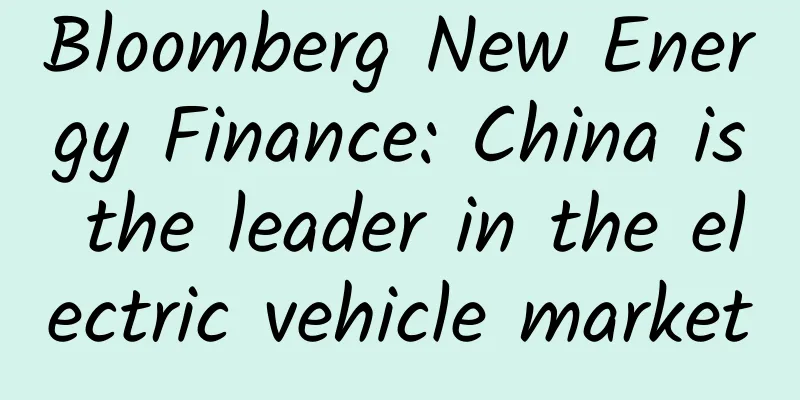Nokia is making mobile phones again: Can it stage a comeback?

|
Recently, after Nokia spent a lot of money to acquire Alcatel-Lucent, there were rumors that Nokia is likely to return to the mobile phone market in the fall of 2016 as the terms of Microsoft's acquisition of Nokia's mobile phone business will be lifted next year. Many reasons were listed to prove that Nokia is likely to make a comeback in the mobile phone market. Is this really the case? First, the industry believes that Nokia's most important asset for returning to the smartphone industry is that it is still the most valuable brand in the field of mobile phones and mobile devices. This view is not entirely unreasonable, but the only thing overlooked is that Nokia's golden age of brand influence in the mobile phone industry was the era of feature phones. Since entering the era of smartphones represented by Apple's iPhone, Nokia's brand influence has shrunk significantly, and even became a synonym for hindering the innovation, development and transformation of the smartphone industry. Looking at reports on the smartphone-related industry, Nokia is almost always mentioned in a negative light. Even before Microsoft changed its name after acquiring Nokia, a related survey showed that as many as 73% of respondents hoped to use the Lumia brand instead of the Nokia brand on future Lumia devices. As a well-known fact, Lumia is the product of the strategic cooperation between Nokia and Microsoft using the Windows Phone system. In other words, in terms of brand attributes, the industry more often associates it with Microsoft. Otherwise, Microsoft would not have retained and adopted the Lumia product brand when it merged Nokia's mobile phone business and changed its name. In addition, according to rumors, Nokia will return to the smartphone market as early as the fall of 2016. Judging from the current development characteristics of the smartphone industry, except for Apple, the stickiness of brands in the market and users is not high. Samsung, whose brand awareness was second only to Apple before, has declined sharply in the smartphone industry. In addition, the driving force of the smartphone industry is shifting to cost-effectiveness, which has further reduced brand loyalty. This has reduced the value of Nokia's return to the mobile phone industry, which we mentioned earlier, using its own brand as the main capital. In addition to the brand, the industry believes that Nokia's capital for returning to the smartphone market is the so-called patents. It is undeniable that Nokia does have strong strength in patents. But it is a well-known fact that patents are generally used for strategic defense. That is, against manufacturers that adopt or infringe their own patents, use lawsuits to slow down the opponent's progress or increase the opponent's costs in disguise by charging special fees. Although this will cause trouble to the opponent and even hinder the opponent's progress in some cases, the opponent's decline does not mean its own rise, otherwise Nokia would have benefited from this strategy long before being acquired by Microsoft, and would not have ended up with the tragic ending of being acquired. The so-called patents here are at best an external factor for Nokia to change itself. What is important is to improve the innovation and competitiveness of its own mobile phones, which is the internal factor of change. Speaking of innovation in mobile phones (including tablets), Nokia's Nokia X mobile phone and Nokia N1 tablet are nothing more than customized Android products, which means that it has to join the fierce competition in the Android camp. Although the market response to these two products was good in the early stage and the publicity was very high-profile, they were eventually abandoned. It is said that the sales volume of Nokia N1 tablet reached 20,000 units 4 minutes and 2 seconds after it went on sale. Two days later, Nokia announced that the number of orders for N1 had exceeded 560,000 units, and there was no further news. As for Nokia X, it is said that the number of pre-orders exceeded 10 million units, but there is no statistics on how many were actually sold in the end. It seems that the final market performance is far from what we see on the surface. The key is that it is not difficult to see Nokia's product strategy for returning to the mobile phone market from these two products. Apart from competing on price, there seems to be nothing new. When it comes to competing on price, everyone knows that no manufacturer can compete with Chinese companies. Samsung's decline is an obvious example. Finally, Nokia is not short of money now. This is indeed very important. After all, the current smartphone market is fiercely competitive. As a former loser, it costs more to re-enter this industry and find its foothold again than before. Investment (including product research and development, marketing, channels, etc.) naturally requires financial support. So the question is, is Nokia really rich as the industry says? According to statistics, after Nokia announced the acquisition of Alcatel-Lucent recently, it may have 7 billion euros in cash reserves. If its map business Here is sold in the future, according to Inderes Securities' valuation of its business of 4.68 billion to 7.34 billion US dollars, Nokia's total cash reserves will be about 15 billion US dollars. It is difficult for us to estimate whether this 15 billion US dollars is enough for a company that returns to an industry and hopes to make a comeback? However, Intel and Microsoft have invested tens of billions of dollars in the tablet and smartphone markets before, and Microsoft has invested 7.2 billion US dollars at once (acquiring Nokia's mobile phone business) to maintain its presence in the smartphone market, but the market effect is very small. Does Nokia really have enough money with this 15 billion US dollars? In fact, Nokia CEO Rajeev Suri refuted the rumors that Nokia would re-manufacture mobile phones last year, saying that Nokia would not return to the mobile phone market. When talking about the rumors that Nokia was considering re-producing mobile phones, Suri pointed out that "we will no longer produce mobile phones ourselves", but through the licensing agreement, Nokia's "brand will return to the consumer world, and the Nokia brand is still strong." But as we analyzed at the beginning of our article, Nokia's brand is no longer what it used to be. So even if it is authorized, which and how many manufacturers are willing to be Nokia's OEM manufacturers? This has to remind us of Intel and Microsoft, who are struggling in the smartphone and tablet market. In order to make Intel Inside and Windows Phone appear in OEM manufacturers' products, Intel did not hesitate to subsidize OEM manufacturers, and Microsoft even changed its inherent Windows business model (from licensing fees to free), but unfortunately, so far, there are still very few manufacturers who follow suit. Based on the above analysis, we believe that if Nokia really returns to the mobile phone market next year as rumored, it will not only fail to make a comeback as a king, but may also repeat its previous failure in the smartphone market. |
<<: Why is the image quality on Android not as high as on iOS?
Recommend
Why is everyone keeping silent about fake TV ratings?
After the two sessions, the topic of “ratings fra...
Weibo Marketing: “Social × Consumption” scenarios are connected and popular cases emerge frequently!
In the past year, Weibo marketing has seen the ev...
iOS internal skills: memory management
[[165151]] Preface Now iOS development has entere...
Not afraid of strong winds or extreme cold, what technological secrets are hidden in the “flying” Winter Olympics torch?
The flame of the 2022 Beijing Winter Olympics has...
Searching for “MOSS” in the real world (Part 3): The “first front” in the quantum computing race
Produced by: Science Popularization China Author:...
Alien spacecraft? Asteroid? Five years ago, its arrival puzzled scientists
No romance can compare to the sea of stars Peop...
Home appliance companies are also playing the sharing economy. How can Skyworth become a pioneer in the coordinated development of smart homes?
Although the road to popularization has not been ...
Layered operations of Toutiao users’ life cycle!
In user operations , user segmentation is a neces...
Qian Xinmiao's "The Best Buying and Selling Strategy for Cyclical Stocks" Stock Trading Tutorial Video
Stock Lecture Training Course Video Lecture Intro...
Brand Marketing: How to create advertisements that users like?
Some time ago, I wrote an article about practical...
In 2020, are Android phones still lagging? This long article tells you the answer
Can an Android flagship phone that costs more tha...
Is it expensive to develop a Sanya nail art mini program? Sanya nail art applet development cost and process
Sanya nail art applet development price 1. Displa...
Read Lu Ming Supreme Temple for free, the novel Lu Ming Supreme Temple has no pop-ups!
[Exciting fantasy, the hottest and most exciting ...
Big data report: So this is your Weibo
(This report is about 4,200 words and takes about...
Do you have a recurring high fever? Be careful! It may be caused by this little bug!
Recently, a small insect has been quite active, s...









